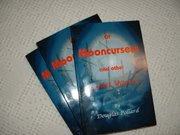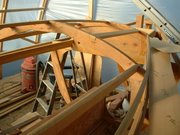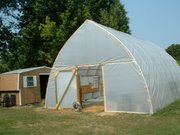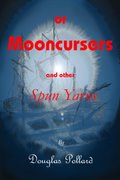Sailboats Fair and Fine: Read oldest posts first
Mr. Bolger later told me he general y leaves the chine out of the plan view of sketches because some people consider them unattractive. By this time I really liked her high stern and even to this day I am amazed that I didn't like it initially.
I didn't have a table of offsets so I made estimates of frame sizes and tried to figure out how to get it all out of a minimum number of plates. After a lot of hair pulling and a lot of guess work I decided that 30 ft would save wasting a lot of aluminum.
I called P. Bolger and we talked it over and he allowed as how, in his own way, that bigger is most always better so he redrew her. When we got the drawings she was even more handsome as her height was the same but with her longer hull she really was fine looking.
We talked about spars. They needed to be aluminum so that we could make them in the shop. I told him that pipe would be cheaper than tubing so we decided to give that a try.
We set up a shed roof over a concrete slab with corrugated fiberglass roof. We had a stack of heavy water proof canvas to close in the open side. The boat had to be built inside so that the wind would not blow away the argon gas that shielded the welding from oxygen in the air.
I took a stack of ½ “ plywood, painted one side putting that side down on the concrete floor hoping it would keep the moisture out so that the plywood would not curl up. The sheets were nailed together with corrugated fasteners the whole thing painted and I started lofting. I had built some smaller boats by eye but had never done any lofting. As a machinist I had done a lot of laying out of machinery and parts. So I started in a way that seem right to me.
Feeling in over my head I visited a local Chesapeake dead rise builder who said, "I don't know nothing about no lofting or working from drawings. I build by proportion and dead reckoning. If it looks right it is and there weren't any measuring or lofting to it. A boat Builder ether know what a boat looks like or he don't, in which case he ain't no boat builder".
Trying a couple of other builders I got some advice that got me going in the right direction. It took me about a week of burning the midnight oil to get her lofted up. Some nights I finished up about one AM.. With a half hour drive home and needing to be back at 7:00 am to run the shop I decided I didn't need to be in such a hurry. After that I cut my days shorter and got more work done and with less mistakes. Before the lofting was complete we began cutting out parts because I had some people with nothing to do.
I did a lot of head scratching laying out the transom but finally got it after some trial and error
We bought a water cooled mig gun for our welder, Rick could weld 60 inches a minute with it continuously. He called it making the fir fly, and he did. I bought a hand held nibbler that could cut the length of aluminum plate in less than a minute.
We straitened up edges with a router and a six foot hardened steel strait edge. For the plating job we used Luann plywood for templates and cut plates to fit with a little sanding here and there. The boat went together in a hurry. We had a boat with bunks and cabinet work ready for sand blasting in eight weeks after the lofting was complete. She had a couple of unfair spots on the hull that we had to cut loose and re weld . On deck there was a spot that kinked because the was a little bit of compound curve there. We used the main hatch slides made ½ in. thick with the proper curve on their bottom edge to pull the kink out. A grab rail was put on to pull out the rest of the kink She looked great from all angles. In addition we placed a set of struts on deck coming from the forward part of the hatch back to the outer edge of the cockpit. It was leaning back about ten degrees. It was there to brace a deck that tended to oil can when walked on. I also figured it might be a good place to snap a dodger on should someone want one.
She was sand blasted the outside one night and the following night we did the interior. The next day we etched with aluminator inside and out and allowed to dry about an hour. With two of us on the outside and two on the inside the whole boat was painted with alodine before she could get a chance to corrode.






No comments:
Post a Comment